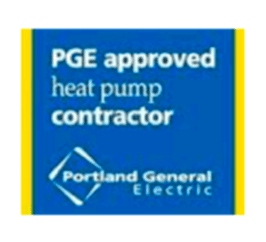It’s that time of year again when you have to start thinking about how to keep warm in the winter. One important factor in staying comfortable is setting your thermostat to the right temperature. Different temperatures work best for different people, but there are some general guidelines that you can follow to help save money on your heating bill.
In this blog post, we will discuss the best thermostat setting for winter and provide tips on how to stay warm without spending a fortune.
What Temperature Should I Set My Thermostat to in Winter?
The best thermostat setting for winter depends on a few different factors. If you have young children or elderly family members living with you, it’s important to keep them warm and comfortable. You should also consider what activities you’ll be doing in your home and how well-insulated it is.
In general, the best temperature to set your thermostat to in winter is between 68 and 72 degrees Fahrenheit.
Read next: The Best Temperature to Set Your Thermostat to in Summer
What is the Ideal Temperature to Sleep At?
We all know how important sleep is for our well-being. Room temperature is a crucial factor in getting the best sleep. A cooler room is an important factor in getting good rest with the best room temperature setting to sleep at being around 65 degrees.
Turning the temperature down at night will help your body regulate your core temperature for sleep and signal it is time for bed. This will keep you comfortable and help you save money on your energy bill.
At What Temperature Outside Should I Turn My Heat On?
You should turn your heat on when the temperature outside drops below 55 degrees. This will help you stay comfortable but also avoid costly heating bills. This is also the lowest temperature you’d want your house to get to avoid water pipes bursting.
There are a few other things you can do to stay warm without cranking up the heat when the outside temps drop. First, dress in layers and make sure you have a pair of cozy socks to put on. You can also close off any rooms that you’re not using. Finally, ensure you’re not letting any warm air escape by sealing up cracks or gaps around your doors and windows.
Is it Better to Keep My Thermostat at a Constant Temperature?
There are two types of people when it comes to thermostat settings: those who set a thermostat and forget it and those who are constantly fiddling with it as they get cold or hot. And sometimes those people live in the same house. One of the best ways to keep the peace in your home is to install a smart programmable thermostat that regulates the ideal temperature for your home – and its occupants – throughout the day, often allowing for easy adjustments with an app on a phone.
Read next: What You Should Know Before Buying a Smart Thermostat
What Should I Set My Thermostat to When I’m Not Home?
If you are away from home for more than four hours in the winter, you can set your thermostat to a lower temperature, around five degrees lower than normal. Over time this will save you money on your heating bill. You can also use a smart programmable thermostat to automatically lower the temperature when you’re not home and give you greater control over your home’s heating system.
What is the Cost of Raising My Thermostat by 1 Degree?
According to Energy Star, for every degree that you raise your thermostat in the winter, you can expect to see an increase of about two percent on your heating bill. So if your usual heating bill is $100 per month, raising the temperature by one degree would add about $2 to your monthly heating costs.
While this may not seem like a lot, it can add up over time. If you raise your thermostat by just two degrees, you could see an increase of $4 per month on your heating bill. And if you do this for the entire winter, that’s an extra $48 that you’ll be paying out each year.
So while raising the temperature on your thermostat may seem like a small change, it can have a big impact on your wallet. If you’re looking to save money this winter, it’s best to keep the temperature at a comfortable, but not too warm, level.
Read next: Are Smart Thermostats Worth It? (2022 Cost Breakdown)
What about Indoor Humidity during Winter?
During the winter, humidity drops between 25 and 35 percent, leaving your indoor air feeling dryer and colder. Humidity is moisture in the air which can make a space feel warmer. Using a humidifier for your HVAC system is a great way to supplement traditional heating methods.
By adding moisture to the air, and making a space feel warmer, you are essentially able to set your thermostat a few degrees colder and still get the same indoor temperature. If you don’t have a whole-home humidifier, boiling water on the stove is a great hack to make your home feel warmer!
What is the Best Temperature for Me?
Finding the right temperature for your home in winter depends on a few factors, such as the type of heating you have in your home, the insulation of your home, and personal preferences.
If you have a forced-air heating system, setting the thermostat to 68 degrees is typically sufficient. If you have radiant floor heating, you may want to set it a few degrees lower, around 65 degrees.
Why is My Room Temperature Different than the Thermostat Setting?
The first thing to do is check your thermostat to make sure it is working. If your HVAC system is continuously running or turning on and off quickly (short-cycling) your thermostat may be the problem. A thermostat normally has a lifespan of 10 years.
As they age, thermostats may have faulty sensors or screens and become unresponsive, signaling it is time to upgrade to a new smart thermostat.
Read next: Why Your Old Thermostat is Probably Ready to Be Replaced
What Should I Do if My Thermostat Isn’t Working?
If your thermostat stops working, you may need to:
- Change the batteries in the thermostat
- Check the fuse box or circuit breaker
- Clean or replace the air filter
- Turn the thermostat off and on again
- Check to make sure your thermostat is clean of dust
Once you’ve determined what the problem is, you can follow the troubleshooting steps in your owner’s manual to fix it. If you can’t figure out what’s wrong, call a professional for maintenance or help upgrading to a smart thermostat.
How Jacobs Can Help
Gaining control over your energy bills while staying comfortable is important to homeowners. When it comes to any part of your heating system, you want a company that has the experience and knowledge to help you make informed decisions. Jacobs Heating & Air Conditioning experts are here to guide you in making decisions that save you money on annual heating and cooling costs.
If you’re interested in smart thermostat installation in your Portland, Oregon, or Vancouver, Washington home, contact Jacobs Heating and Air Conditioning to talk to a Home Automation specialist about our smart thermostat options. No matter what you need we’re always just a phone call away.










